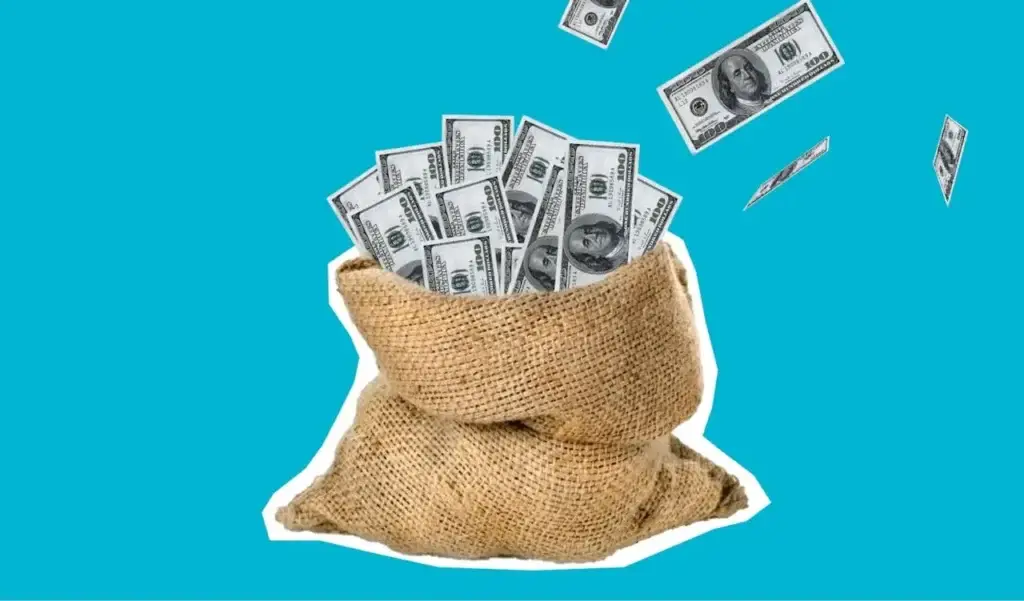Saving money can be challenging. We often face a lot of things we want to buy and unexpected expenses that eat into what we could save. But there’s a proven, exciting way to tackle this challenge: a money-saving challenge. These are like fun games or goals you set to save money. They’re simple tasks or changes you make in how you handle cash. From minor everyday adjustments to more significant lifestyle shifts, these challenges help you save money more excitingly and creatively.
What’s exciting about these challenges is that they make saving money fun. They turn everyday money habits into an adventure. And the best part? They help you better manage your money while making it feel less like a chore. These challenges look short-term, but they help build long-lasting habits. They teach you to be more thoughtful about money, which sticks with you for years, allowing you to be more secure with your finances. Let us explore these nine incredible money-saving challenge tips. They’re not just tips; they’re tools to help you save money and reach your financial goals.
Money-Saving Challenge Tips
Related: How to save more money: 15 practical ways
Table of Contents
The 52-Week Money-Saving Challenge
The 52-Week Money Challenge is a straightforward and effective savings method. It involves saving a specific amount of money each week for a year. You start by setting aside $1 in the first week, then increase the saved amount by $1 every week after that. By the end of 52 weeks, you’ll have set aside $1,378. This challenge operates on the principle of starting small and gradually increasing the savings amount. It’s an easy way to develop a consistent savings habit without straining your budget. By the end of the year, you’ll have a substantial amount saved, which can serve as an emergency fund, contribute to a specific financial goal, or act as a foundation for continued savings.
For instance, if you follow this challenge consistently, by the end of the year, you’ll have saved:
Week 1: $1; Week 2: $2 Week 3: $3 … Week 52: $52
Total saved over 52 weeks: $1,378
This method is not only achievable but also provides a tangible and gratifying way to watch your savings grow steadily week by week. It’s a simple and effective strategy to boost your savings while making a noticeable difference in your financial security.
No-Spend Money-Saving Challenge
The No-Spend Month Challenge is a test of discipline aimed at curbing unnecessary expenses. The idea is to limit your spending exclusively on essential items for an entire month, avoiding discretionary or non-essential purchases. By committing to spend only on necessities such as groceries, utility bills, and essential toiletries, you create an opportunity to evaluate your spending habits and distinguish between needs and wants. This challenge helps redefine your relationship with money by encouraging conscious and deliberate spending.
It not only aids in immediate cost savings but also promotes a deeper understanding of your consumption patterns. You become more aware of impulse buying tendencies and can distinguish between what is essential for daily life and what is not. The result is a newfound appreciation for the value of money and a reoriented perspective on personal finances. During this month, you might discover alternative ways to entertain yourself, find free activities to do, or repurpose items you already own. It’s a chance to foster creativity by making the most of what you have.
This challenge is a reset button for spending habits, helping you distinguish between necessary and unnecessary expenses and ultimately leading to considerable savings. It also encourages mindfulness and a more deliberate approach to future spending, which can have lasting positive effects on your financial well-being.
Related: The 10 Best Free Budgeting Apps for 2023
The Spare Change Money-Saving Challenge
The Spare Change Challenge is a simple yet powerful way to accumulate savings by collecting and storing all your spare change. This challenge involves depositing coins or small-denomination currency into a designated jar, piggy bank, or savings account regularly.
While a single coin may not seem like much, the collective effect of consistently saving spare change can surprise you with the amount it accumulates over time. This challenge instills the habit of setting aside any coins or small bills you receive as a change from your transactions.
The spare change that might have been left unused or forgotten in pockets, bags, or around the house is transformed into a deliberate and consistent savings practice. Over time, this spare change can add up to a substantial sum.
The Spare Change Challenge offers a painless way to save without impacting your budget. The collected funds can serve various purposes, from acting as an emergency fund to contributing to larger savings goals or even funding small indulgences without affecting your central finances. It’s an effortless way to build a financial safety net or achieve specific savings targets without much effort.
30-Day Minimalism Money-Saving Challenge
The 30-Day Minimalism Challenge is an opportunity to declutter your life while boosting your savings. This challenge involves removing one item per day for 30 days from your living space, whether it’s clothes, gadgets, or household items that you no longer use or need.
By downsizing and simplifying, you’re not only creating a more organized and less cluttered living environment but also setting the stage for potential savings. As you declutter, you can sell the items in good condition, generating extra income. This money can then be directed straight into your savings or used to pay off debts.
Beyond the financial benefits, this challenge encourages a mindset shift towards intentional consumption. It makes you more conscious of what you bring into your life, helping to deter unnecessary spending on items that might end up unused or forgotten.
The 30-Day Minimalism Challenge isn’t just about purging possessions; it’s about reassessing what truly adds value to your life. By selling items that no longer serve you, you not only tidy up your space but also add to your financial well-being. This challenge leads to a more precise living space, a more focused mindset, and the potential to accumulate savings from items you no longer need.
Cash-Only Money-Saving Challenge
The Cash-Only Challenge is a deliberate attempt to manage and control your spending habits by using physical cash for all your day-to-day expenses instead of relying on credit or debit cards. By committing to this challenge for a specific period, such as a week or a month, you gain a heightened awareness of your spending patterns and a more tangible connection to your money.
When you use cash, it creates a visual representation of the money left in your possession with each transaction. This hands-on approach often leads to more thoughtful and deliberate spending decisions. You’re forced to consider the actual amount you have available, which can reduce impulsive purchases and encourage more mindful buying habits.
This challenge helps break the habit of mindless swiping or tapping a card without much consideration for the actual value of the purchase. It brings a greater sense of accountability and control over your expenses. Additionally, it aids in sticking to a predetermined budget and may even prevent overspending, as you’re limited to the cash on hand.
Moreover, by monitoring and limiting your spending to physical cash, you gain a clearer understanding of where your money is going. This, in turn, helps in identifying areas where you can cut down on expenses, leading to potential savings in the long run.
Cash Windfall Money-Saving Challenge
The Cash Windfall Challenge involves a deliberate and disciplined approach to managing unexpected or additional funds that come your way, such as a tax refund, work bonus, gift, or any unexpected money. Rather than instantly spending or splurging on this windfall, the challenge encourages you to save and invest it wisely.
Upon receiving an unexpected windfall, the challenge prompts you to divert these funds directly into your savings or investments instead of considering them as additional disposable income. This approach helps boost your savings significantly without altering your regular budget or spending habits.
By treating windfalls as savings catalysts rather than extra spending money, you’re setting the stage for long-term financial gain. This challenge allows you to take advantage of these sudden influxes of cash to reinforce your savings or contribute to specific financial goals, such as building an emergency fund, paying off debt, or investing in assets for the future.
Embracing the Cash Windfall Challenge promotes financial prudence. It ensures that unexpected money is allocated to secure your financial future, rather than being frittered away on impulsive purchases or fleeting expenses. This approach assists in fortifying your savings and overall financial stability in the long term.
Related: 12 brilliant and creative ways to save money
Caffeine Money-Saving Challenge
The Caffeine Challenge reduces expenses linked to daily coffee shop visits by making coffee at home or work instead. By cutting back on buying coffee outside, this challenge helps save money over time.
This challenge involves preparing coffee or beverages rather than relying on store-bought ones. By investing in a coffee maker or simply brewing your drinks at home, you can significantly reduce the amount spent on buying expensive beverages from cafes or coffee shops.
The savings might seem small daily, but they accumulate over time, creating a notable impact on your monthly budget. It’s a small change that can lead to substantial savings by the end of the month or year.
Moreover, taking on the Caffeine Challenge not only reduces expenses but also encourages better consumption habits. Making coffee at home allows you to customize your beverages and experiment with various flavors and types of coffee, enhancing the overall experience while saving money.
Ultimately, by swapping store-bought coffee for homemade options, you’re not just cutting costs; you’re also adopting a more mindful approach to spending, discovering new ways to enjoy your favorite drinks, and contributing to a more cost-effective lifestyle.
Digital Detox
The Digital Detox Challenge revolves around decluttering your online life by unsubscribing from unused online subscriptions and services. It involves a deliberate effort to review and cancel unnecessary monthly fees or subscriptions, freeing up a significant amount of money that would otherwise have been spent with little consideration.
Many individuals have various subscriptions to streaming services, software, or online platforms that they no longer actively use. This challenge prompts you to evaluate each subscription and eliminate those that no longer add value to your life. By doing so, you not only declutter your digital space but also reduce the recurrent fees that slowly drain your budget.
This challenge is a proactive step toward saving money. It encourages a more mindful approach to spending by reevaluating the necessity of each subscription. It also serves as a reminder to be intentional with your online expenses, ensuring that your money is directed towards services and platforms that align with your current needs and interests.
The Digital Detox Challenge not only aids in cost reduction but also encourages a conscious and intentional relationship with your online expenses. By canceling unused subscriptions, you liberate funds that can be redirected toward more essential or meaningful areas of your life, contributing to better financial management and increased savings over time.
DIY (Do-It-Yourself)
The DIY (Do-It-Yourself) Challenge advocates for taking on home improvement or repair tasks independently rather than hiring professionals. By embracing this challenge, you can significantly reduce costs associated with labor and service charges. The challenge involves acquiring new skills and knowledge to tackle minor repairs, maintenance, or home improvement projects.
From fixing minor issues around the house to more ambitious DIY endeavors like painting, carpentry, or simple renovations, this challenge encourages you to explore your abilities and learn through hands-on experience. By taking on these tasks independently, you save money that would have been spent on professional services. Additionally, the DIY Challenge empowers you to take control of your living space as you become more involved in its maintenance and improvement.
Moreover, embracing the DIY Challenge fosters a sense of accomplishment and self-sufficiency. As you acquire new skills and complete tasks independently, it builds confidence and reduces reliance on external services for minor household issues. Ultimately, the DIY Challenge is not just about reducing expenses; it’s about empowerment and self-reliance. By embracing this challenge, you not only save money on labor costs but also gain valuable skills and independence in managing and improving your living space.
Partying shot
In the quest for financial stability and security, embarking on money-saving challenges can be a game-changer. Throughout this journey, we’ve explored nine exciting money-saving challenges that not only invigorate your savings strategy but also transform the way you perceive and manage your finances.
From the disciplined approach of the 52-Week Money Challenge to the intentional simplicity of the No-Spend Month, each challenge offers a unique opportunity to fortify your financial health. The Spare Change Challenge teaches us that even the most negligible savings can be significant, while the DIY Challenge underscores the power of self-sufficiency and cost reduction.
The takeaway from these money-saving challenges goes beyond merely accumulating savings. It\’s about cultivating a mindset of conscious spending, informed decision-making, and proactive money management. As we conclude this exploration, remember that these challenges are not quick-fix solutions but stepping stones in your journey toward financial resilience. They instill discipline, awareness, and mindfulness in your financial habits, leading to long-term benefits and a more secure financial future.


